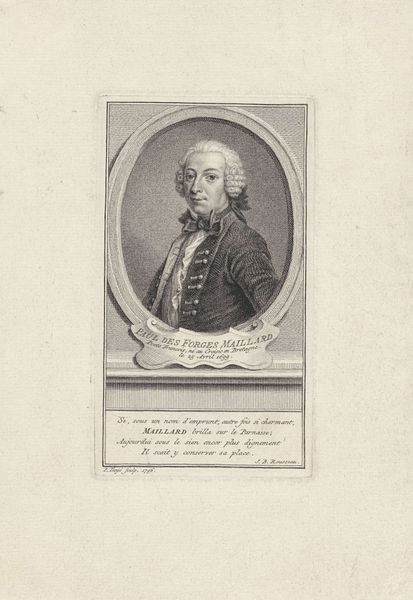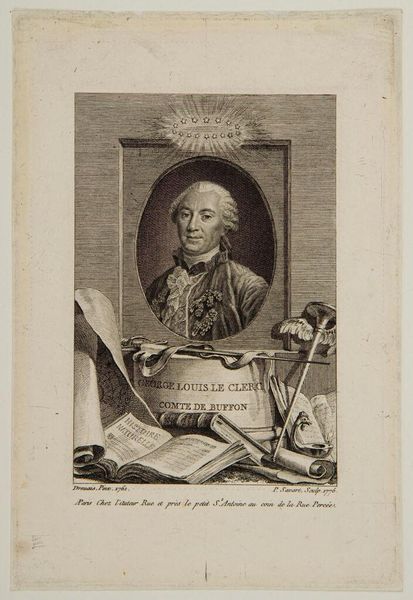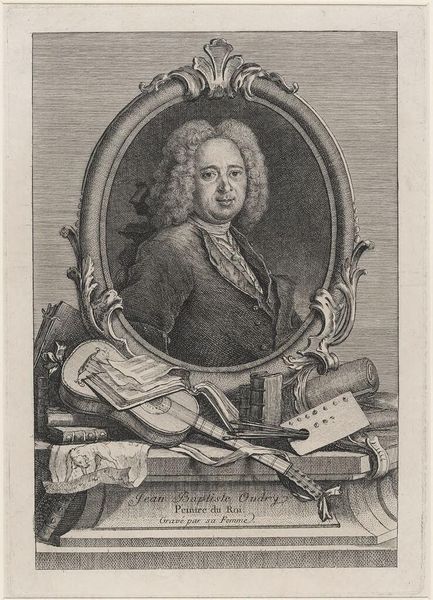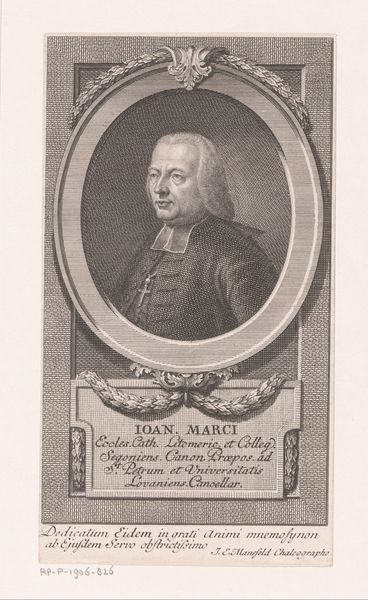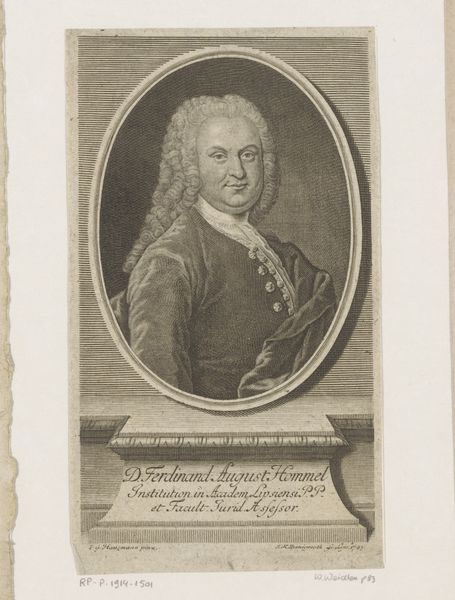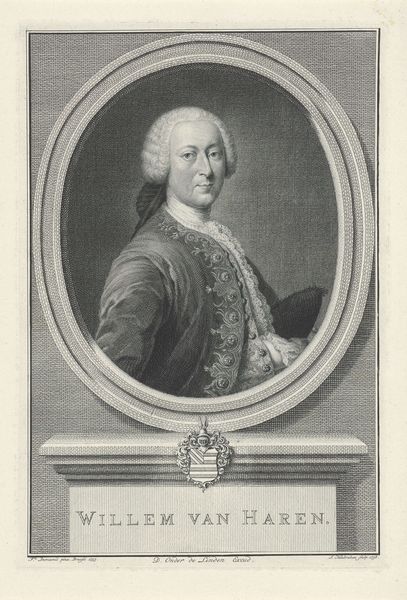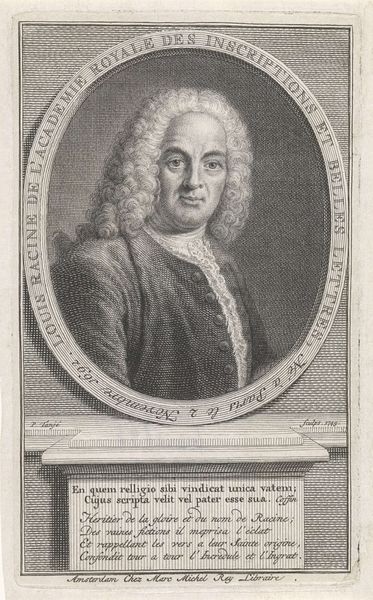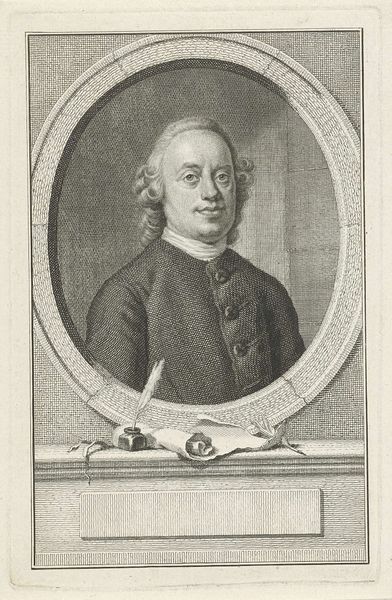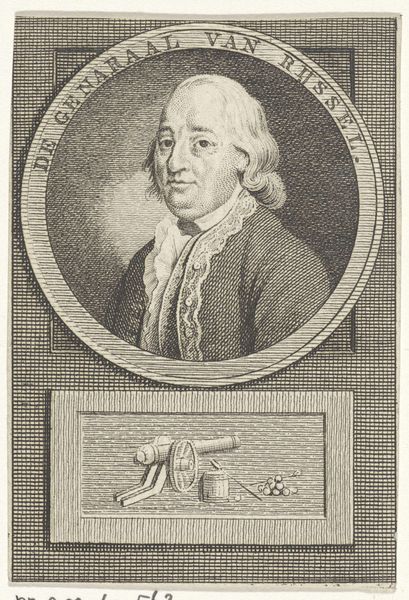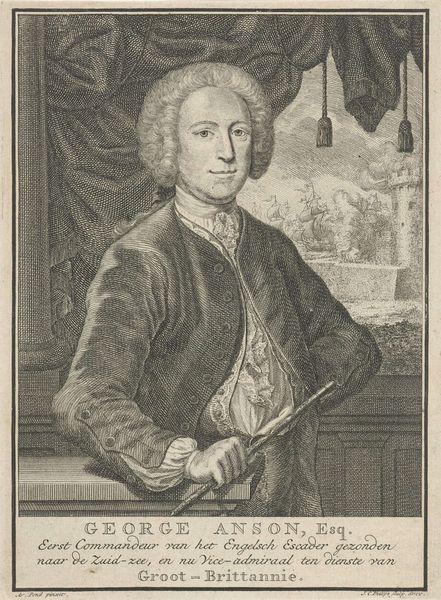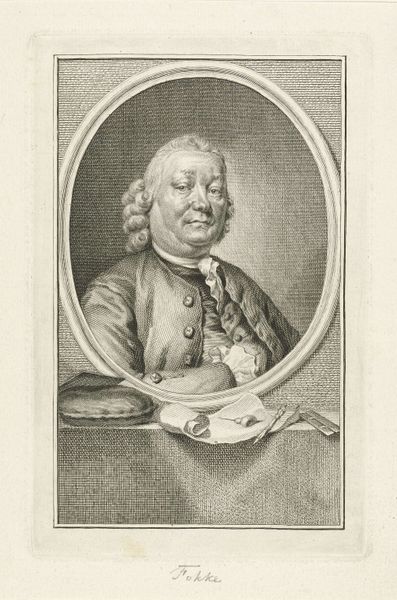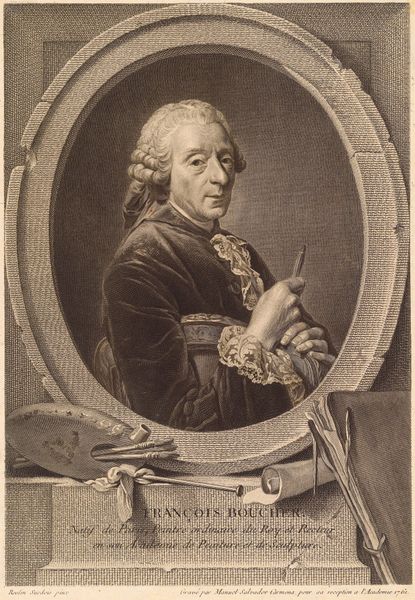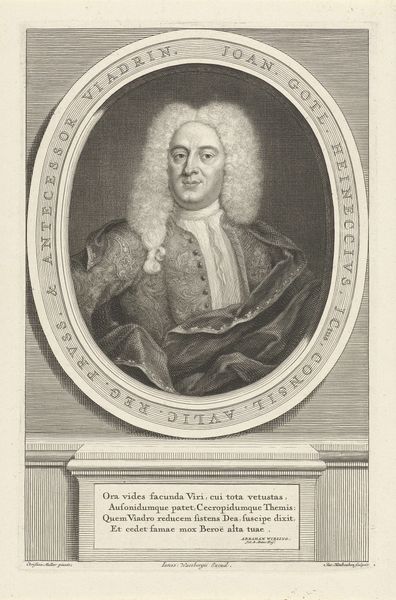
print, paper, engraving
#
portrait
#
baroque
# print
#
old engraving style
#
paper
#
engraving
Dimensions: height 380 mm, width 248 mm
Copyright: Rijks Museum: Open Domain
Curator: What immediately strikes me is the rather imposing nature of this portrait. Editor: Indeed. We are looking at "Portret van Christian Gottlieb Glafey," created in 1756 by Jacob Houbraken. The print is an engraving on paper, a medium which lends itself to intricate detail and the reproduction of textures. The Baroque period valued these details and the texture they give the artworks. Curator: The very essence of Baroque portraiture lies in its attempt to capture not just the likeness, but also the status and virtues of the sitter. Christian Gottlieb Glafey, judging from the papers and books depicted, must have been involved in literary or academic pursuits. Notice how his calm gaze and the surrounding texts are placed. We are confronted by this powerful white male's achievements in literacy. How do these traditional ways to showcase someone impact our perceptions? Editor: Let’s zoom in on those Baroque visual elements, such as the ornate oval frame which contains the subject. It seems as if the paper and instruments that adorn the page seep out from underneath, further highlighting the power this single, static image has over our perception of Glafey. Note the expert use of line and hatching, which provides the image depth and shading. The balance within the composition makes your eyes follow the engraving’s shapes with ease. It has a formal perfection that emphasizes Glafey's high status. Curator: His powdered wig and the details of his jacket tell a tale of privilege during a tumultuous period. This was an era defined by its socio-economic disparities, a stark reminder of the imbalance between the elite and the vast majority, living lives of exploitation in European society. This print immortalizes his position, perhaps masking more complicated dynamics underneath this portrait. Editor: Absolutely. By analyzing line, form, and the arrangement of elements, the Baroque composition speaks of order and precision in Glafey's status, capturing his essence through carefully crafted details. It encapsulates an ideal rather than just reflecting a likeness. Curator: Examining the portrait through the lens of historical context and socio-political undercurrents shows how such art served to perpetuate established orders, reflecting power, and perhaps concealing less favorable aspects. Editor: Seeing its formal devices allows the careful organization and details to speak of their inherent qualities as the primary means of impact.
Comments
No comments
Be the first to comment and join the conversation on the ultimate creative platform.

